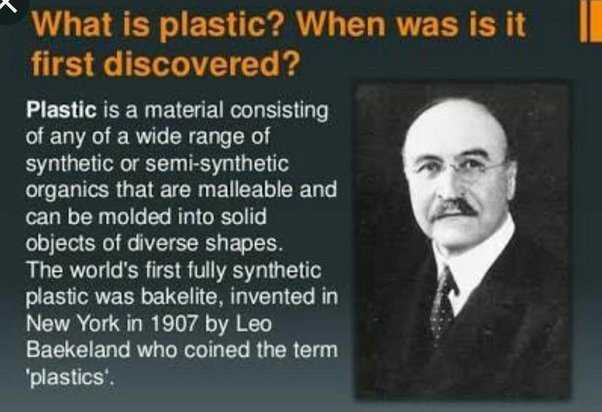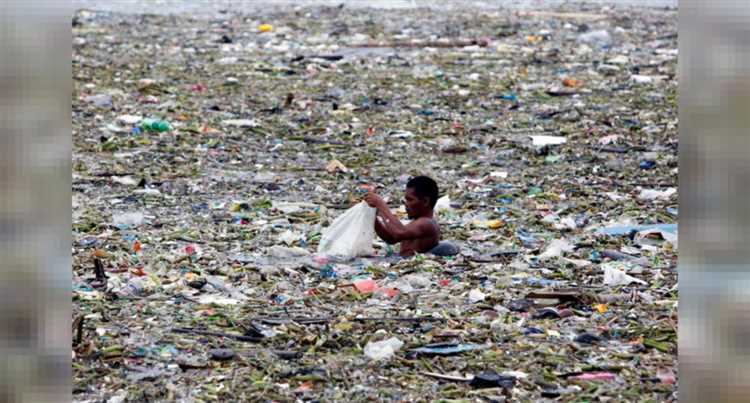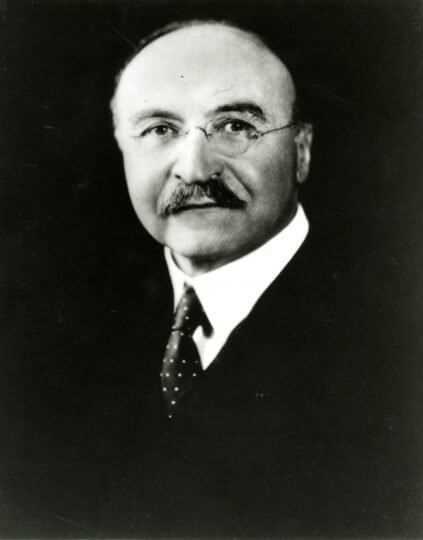
Plastic has become an integral part of our modern lives, with its presence felt in almost every industry and household. From the packaging of our food to the vehicles we drive, plastic has revolutionized the way we live and interact with the world around us. But have you ever wondered about the origins of this remarkable material? In this article, we will take a journey back in time to unravel the inventor behind the creation of plastic and explore the fascinating history and impact of this revolutionary substance.
Plastic, derived from the Greek word “plastikos” meaning “capable of being shaped or molded,” has a rich and complex history that spans centuries. While many inventors and scientists have contributed to its development, one man stands out as the pioneer of modern plastic: Alexander Parkes.
Born in Birmingham, England, in 1813, Alexander Parkes was a skilled metallurgist and chemist. It was his relentless curiosity and innovative spirit that led him to experiment with materials and discover a groundbreaking invention that would change the course of human history. In 1856, Parkes introduced Parkesine, the world’s first man-made plastic.
- Unearthing the Beginnings: Invention and Early Days
- Pioneering Innovator: A Spotlight on the Inventor
- Creating Bakelite: The Birth of Plastic
- Impact and Legacy
- The Rise of Plastic: A Material for the Masses
- Plastic’s Impact on Industries: Revolutionizing Manufacturing
- Environmental Consequences: The Dark Side of Plastic
- Future Possibilities: Exploring Sustainable Alternatives
- Questions and answers
- Who is the inventor of plastic?
- When was plastic invented?
- What is the origin of plastic?
- How did plastic revolutionize the world?
- What are the modern uses of plastic?
Unearthing the Beginnings: Invention and Early Days

Plastic, a material that has become ubiquitous in our modern lives, can be traced back to its humble beginnings. The invention of plastic is a tale of innovation and perseverance that started in the 19th century.
The origins of plastic can be attributed to the work of several inventors who saw the need for a versatile and durable material. In 1907, Leo Hendrik Baekeland, a Belgian-American chemist, successfully created the first synthetic plastic known as Bakelite. Baekeland’s invention laid the foundation for the modern plastic industry and revolutionized the way we live and consume.
Baekeland’s breakthrough came after years of experiments and research. He was searching for a substitute for shellac, a natural resin used in electrical insulation. Through a series of experiments, Baekeland discovered that by combining phenol and formaldehyde, he could create a substance that could be molded and hardened into any shape. This new material was not only heat resistant but also durable and easy to manufacture.
The invention of Bakelite brought significant advancements in various industries, including automotive, electrical, and consumer goods. It laid the foundation for the development of other types of plastics, such as polyethylene, polystyrene, and polypropylene.
The early days of plastic production were marked by excitement and optimism. Plastic was hailed as a miracle material that promised to revolutionize everyday life. It offered endless possibilities for innovation and design. From household items to industrial applications, plastic quickly became the material of choice for manufacturers and consumers alike.
However, as the plastic industry grew, concerns about its environmental impact began to surface. The durability and non-biodegradable nature of plastic led to issues of waste management and pollution. Today, efforts are being made to develop more sustainable alternatives and to increase recycling and reduce plastic waste.
In conclusion, the invention of plastic by Leo Hendrik Baekeland in the early 20th century paved the way for the development of a material that has transformed our lives. From its humble beginnings to its widespread use today, plastic continues to shape our world, raising both possibilities and challenges for the future.
Pioneering Innovator: A Spotlight on the Inventor
In the late 19th century, a forward-thinking and innovative chemist named Leo Hendrik Baekeland revolutionized the world with his invention of plastic. Baekeland, born in 1863 in Belgium, showed an early aptitude for science and embarked on a career that would make him one of the most influential inventors of his time.
After obtaining a degree in chemistry from the University of Ghent, Baekeland moved to the United States and began conducting extensive research in his home laboratory. His passion and dedication to his work led him to make groundbreaking discoveries that would shape the future of materials.
Creating Bakelite: The Birth of Plastic
In 1907, Baekeland made his most significant breakthrough when he invented a new type of synthetic material called Bakelite. This heat-resistant and versatile substance paved the way for the mass production of plastic and marked the birth of the modern plastics industry.
Bakelite, derived from coal tar and formaldehyde, was the first thermosetting plastic. This meant that once molded and cooled, it retained its shape and could not be re-melted or reshaped like other types of plastic. Baekeland’s invention opened up a world of possibilities for manufacturers and consumers alike, as it could be molded into intricate shapes and used in a wide range of products.
Impact and Legacy

Baekeland’s invention of Bakelite had a profound impact on society and industry. The newfound availability of plastic transformed various sectors, including electronics, automotive, and consumer goods. Bakelite became a go-to material for manufacturers due to its affordability, durability, and the ease with which it could be mass-produced.
Baekeland’s remarkable contributions to the field of chemistry and materials science earned him numerous accolades. In 1939, he received the Perkin Medal for his outstanding achievements, and he was later inducted into the National Inventors Hall of Fame.
The legacy of Baekeland’s invention continues to reverberate to this day, as plastic is now an indispensable part of our daily lives. From household items to technological advancements, the impact of plastic can be felt in almost every aspect of modern society.
In conclusion, Leo Hendrik Baekeland’s ingenuity and relentless pursuit of innovation laid the foundation for the plastic revolution. Through his invention of Bakelite, he changed the course of history and transformed the way we live and interact with the world around us. His pioneering spirit continues to inspire future generations of inventors and serves as a reminder of the transformative power of scientific discovery.
The Rise of Plastic: A Material for the Masses
Plastic, with its incredible versatility and adaptability, has become an indispensable material in our modern world. From the moment it burst onto the scene, it revolutionized industries and changed the way we live, work, and consume.
Before plastic came along, natural resources like wood, glass, and metal were the go-to materials for manufacturing. However, they had their limitations. Wood was prone to rotting, glass was easily breakable, and metal was heavy and difficult to shape. The need for a lightweight, durable, and affordable alternative gave rise to the invention of plastic.
Plastic’s origins can be traced back to the late 19th century, when the first synthetic polymer, celluloid, was created by American inventor John Wesley Hyatt. Celluloid quickly gained popularity as a substitute for ivory in billiard balls and later found its way into photography, film, and even clothing. This early success set the stage for further advancements in plastic technology.
From celluloid, the development of other types of plastics progressed rapidly. In 1907, Leo Hendrik Baekeland introduced Bakelite, the first true synthetic plastic. This thermosetting material, made from a mixture of phenol and formaldehyde, was incredibly resilient and could be molded into various shapes. Bakelite became widely used in electrical insulation, automotive parts, and household items, setting the stage for the mass production of plastic materials.
Plastic truly came into its own during World War II when its versatility and lightness proved invaluable for military applications. Plastic products were used for everything from helmets and aircraft components to food containers and synthetic rubber. Its popularity skyrocketed, and after the war, plastic became an integral part of the post-war consumer boom.
The 1950s and 1960s saw a surge in the development of new types of plastics, including polyethylene and polypropylene, which were cheaper to produce and offered even more possibilities for various industries. Plastic packaging became ubiquitous, replacing traditional materials like paper and glass in many applications.
Today, plastic is everywhere – from the tech gadgets we rely on to the cars we drive and the clothes we wear. It has become an essential material for packaging, construction, healthcare, and countless other sectors. However, its widespread use has also raised concerns about its environmental impact, leading to efforts to reduce plastic waste and find alternative materials.
In conclusion, the rise of plastic has been nothing short of extraordinary. Its invention and subsequent advancements have transformed our society, providing us with a material that is lightweight, versatile, and cost-effective. While it faces challenges in terms of sustainability, plastic remains an integral part of our daily lives and will likely continue to evolve and adapt as our needs change.
Plastic’s Impact on Industries: Revolutionizing Manufacturing
Plastic has had a profound impact on industries around the world, revolutionizing the way products are manufactured. Its versatile nature and wide range of applications have made it an essential material in various sectors.
One of the key advantages of plastic is its ability to be molded into different shapes and sizes, allowing manufacturers to create intricate and complex designs with ease. This has opened doors to endless possibilities in product design, enabling companies to produce innovative and functional items that were once considered impossible.
The introduction of plastic in manufacturing processes has also resulted in significant cost savings. Compared to traditional materials like metal and glass, plastic is much lighter and less expensive to produce, leading to lower production costs. This has made manufacturing more efficient and affordable, allowing companies to reach a wider customer base.
Additionally, the durability and resistance of plastic have made it an ideal material for industries such as automotive, aerospace, and construction. Plastic components in these sectors can withstand extreme conditions, reducing the need for frequent repairs or replacements. This not only saves time and money but also contributes to environmental sustainability by reducing waste.
Plastic’s impact on industries is not limited to manufacturing processes alone. Its lightweight and versatile nature have also revolutionized the transportation and packaging sectors. The use of plastic in vehicle parts has contributed to fuel efficiency and reduced emissions. Moreover, plastic packaging materials have extended the shelf life of food and other perishable items, reducing spoilage and waste.
However, as plastic consumption continues to rise, there are growing concerns about its impact on the environment. The improper disposal and accumulation of plastic waste have led to pollution, habitat destruction, and harm to marine life. As industries continue to explore alternative materials and sustainable practices, the future of plastic’s role in manufacturing remains a topic of debate and innovation.
- Plastic has revolutionized the manufacturing industry by allowing for intricate and complex product designs.
- Plastic’s lightweight and cost-effective nature have resulted in significant cost savings in manufacturing processes.
- Plastic’s durability and resistance make it ideal for industries such as automotive, aerospace, and construction.
- Plastic’s versatility has also revolutionized the transportation and packaging sectors.
- Growing concerns about plastic waste have prompted industries to explore alternative materials and sustainable practices.
Environmental Consequences: The Dark Side of Plastic

Plastic, once hailed as a revolutionary material with countless applications, has also brought with it a dark side of environmental consequences. While plastic has undoubtedly improved our lives in many ways, it is crucial to acknowledge and address the negative impact it has had on our planet.
One of the most significant environmental consequences of plastic is its contribution to pollution. Plastic waste is ubiquitous, with millions of tons ending up in landfills, oceans, and other natural habitats every year. The slow decomposition rate of plastic means that it can persist in the environment for hundreds of years, continuing to pollute and harm ecosystems.
The production of plastic also takes a toll on the environment. The extraction of fossil fuels, such as oil and natural gas, which are used as raw materials for plastic production, contributes to air and water pollution. The manufacturing process itself generates greenhouse gas emissions and other pollutants, further exacerbating climate change and environmental degradation.
Plastic pollution poses a significant threat to wildlife as well. Marine animals often mistake plastic debris for food and ingest it, leading to internal injuries, starvation, and death. Additionally, animals can become entangled in plastic waste, resulting in suffocation, strangulation, or limb amputation. This not only affects marine life but can also have cascading effects on entire ecosystems.
Microplastics, tiny fragments of degraded plastic, are another concerning consequence of plastic pollution. They can be found in the air, water, and soil, posing risks to human health and wildlife. Microplastics are ingested by organisms at the base of the food chain, eventually accumulating in higher concentrations as they move up the food web. Studies have shown that these microplastics can have detrimental effects on organisms, including hormone disruption, reproductive issues, and decreased immune function.
Efforts to mitigate the environmental consequences of plastic are underway. Governments, businesses, and individuals are increasingly recognizing the need for sustainable alternatives and implementing measures to reduce plastic waste and promote recycling. However, tackling this complex issue requires a collective effort and a shift towards a more circular and sustainable economy.
As we continue to explore the origins and innovations of plastic, it is essential not to overlook its dark side. By understanding the environmental consequences, we can strive to find solutions that balance the benefits of plastic with the need to protect our planet for future generations.
Future Possibilities: Exploring Sustainable Alternatives

As the world becomes increasingly aware of the negative environmental impact of plastic, the search for sustainable alternatives has gained momentum. Scientists and innovators are actively exploring new materials and processes that could replace traditional plastic and reduce its harmful effects on ecosystems and human health.
One promising alternative is bioplastics, which are derived from renewable sources such as corn, sugarcane, or algae. These materials have similar properties to traditional plastic but are biodegradable, meaning they can be broken down by natural processes over time. Bioplastics offer the potential to reduce plastic waste and mitigate pollution in landfills and oceans.
Another avenue being explored is the development of compostable plastics. These materials are designed to break down into harmless organic matter when exposed to specific conditions, such as heat and moisture. Compostable plastics offer a sustainable solution for single-use items like packaging and cutlery, as they can be disposed of in composting facilities instead of ending up in landfills.
In addition to bioplastics and compostable plastics, researchers are investigating the use of innovative materials like mycelium. Mycelium is the vegetative part of fungi and can be grown into specific shapes and structures. It has the potential to replace traditional plastics in various applications, including packaging, construction materials, and even furniture.
Advancements in technology also offer the possibility of creating materials that mimic the properties of plastic without using harmful chemicals. For example, scientists are exploring the use of cellulose-based materials, which are derived from plant fibers. These materials can be sourced sustainably and have similar properties to plastic, making them a viable alternative.
Ultimately, the future of plastics lies in exploring sustainable alternatives that prioritize environmental and human well-being. While there is still much research and development to be done, the growing interest and investment in these alternatives indicate a shift toward a more sustainable and responsible approach to plastic production and consumption.
Questions and answers
Who is the inventor of plastic?
The inventor of plastic is Alexander Parkes.
When was plastic invented?
Plastic was invented in 1856.
What is the origin of plastic?
The origin of plastic can be traced back to the mid-19th century, when Alexander Parkes first discovered a material he called “Parkesine” which later became known as celluloid.
How did plastic revolutionize the world?
Plastic revolutionized the world by providing a lightweight, durable and versatile material that could be used in a wide range of applications, from packaging to electronics.
What are the modern uses of plastic?
Plastic is used in numerous modern applications, such as manufacturing of consumer goods, construction materials, medical devices, and automotive parts.